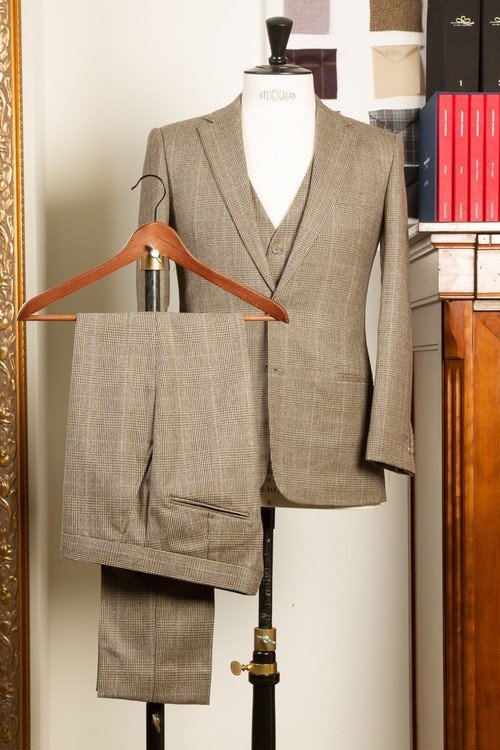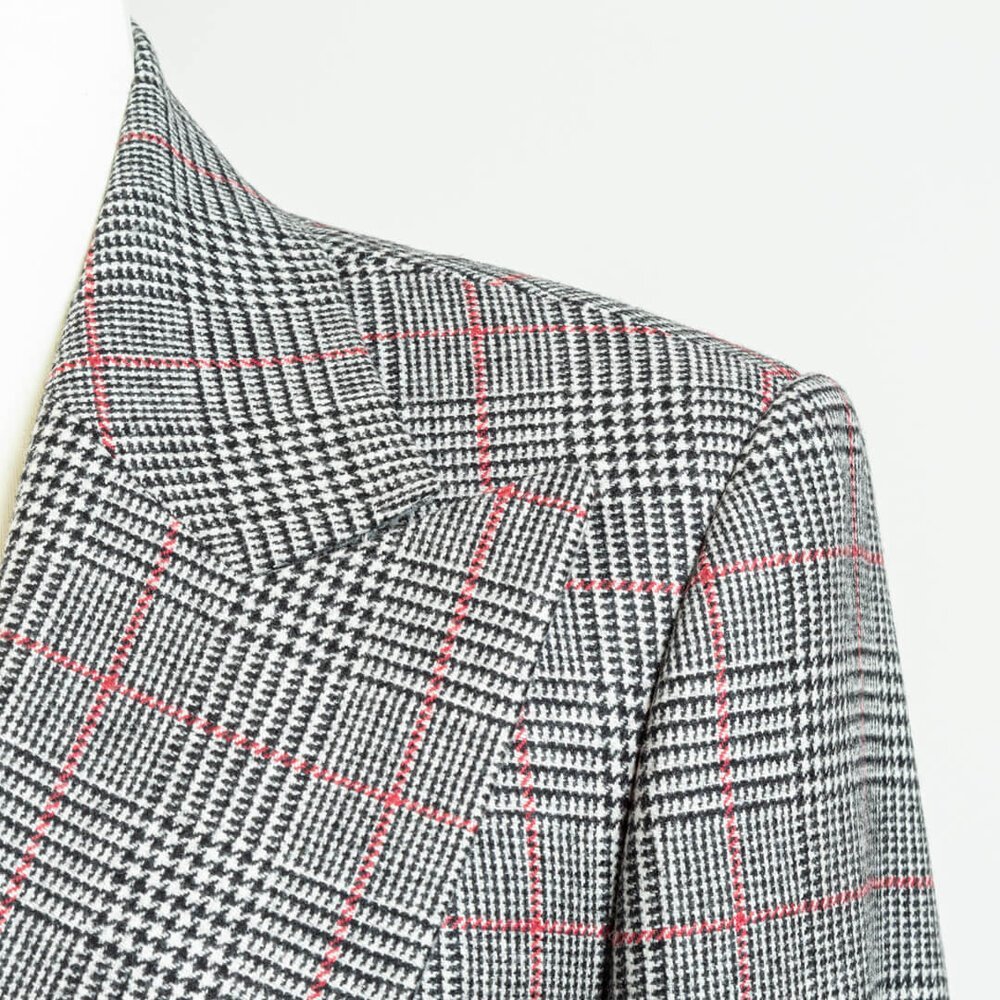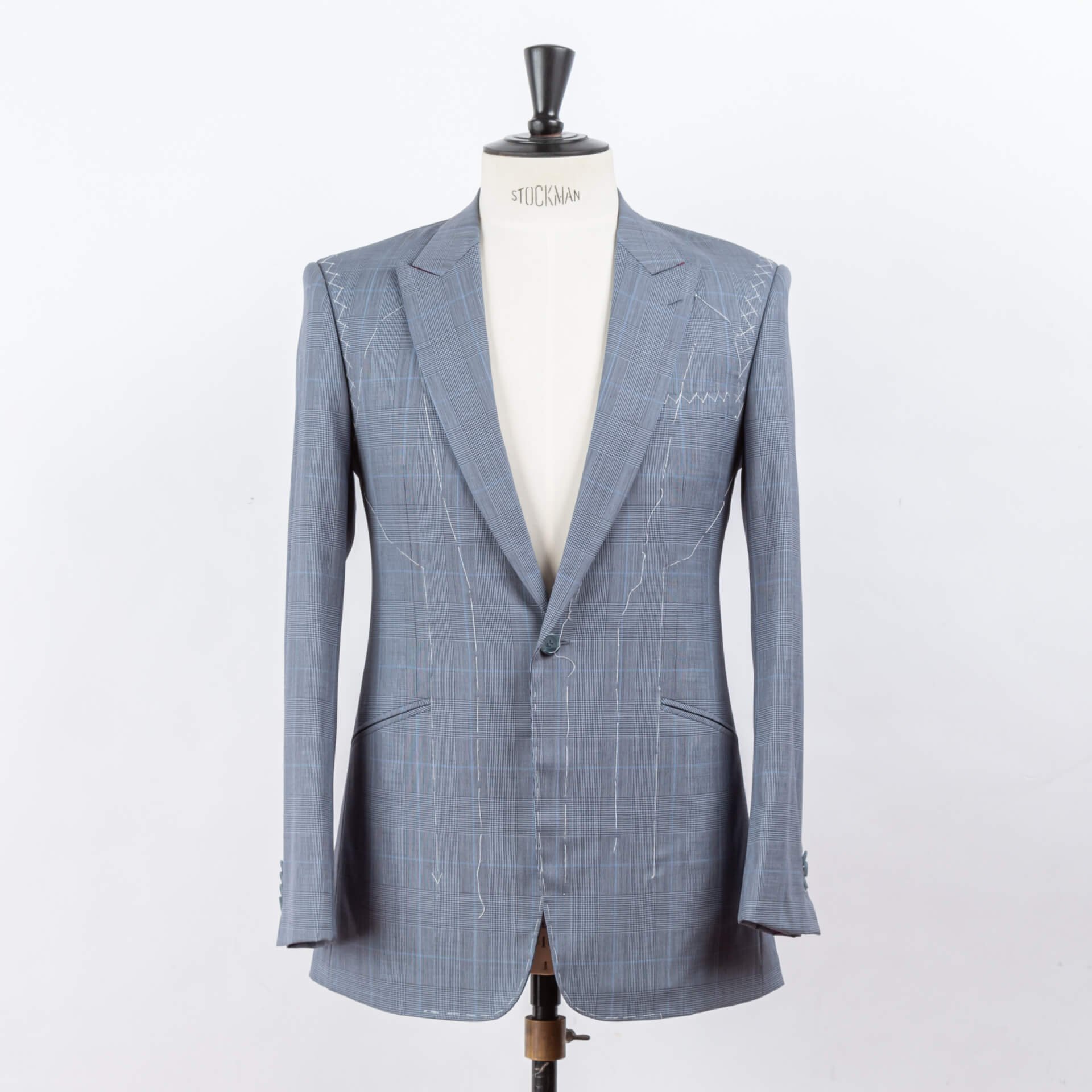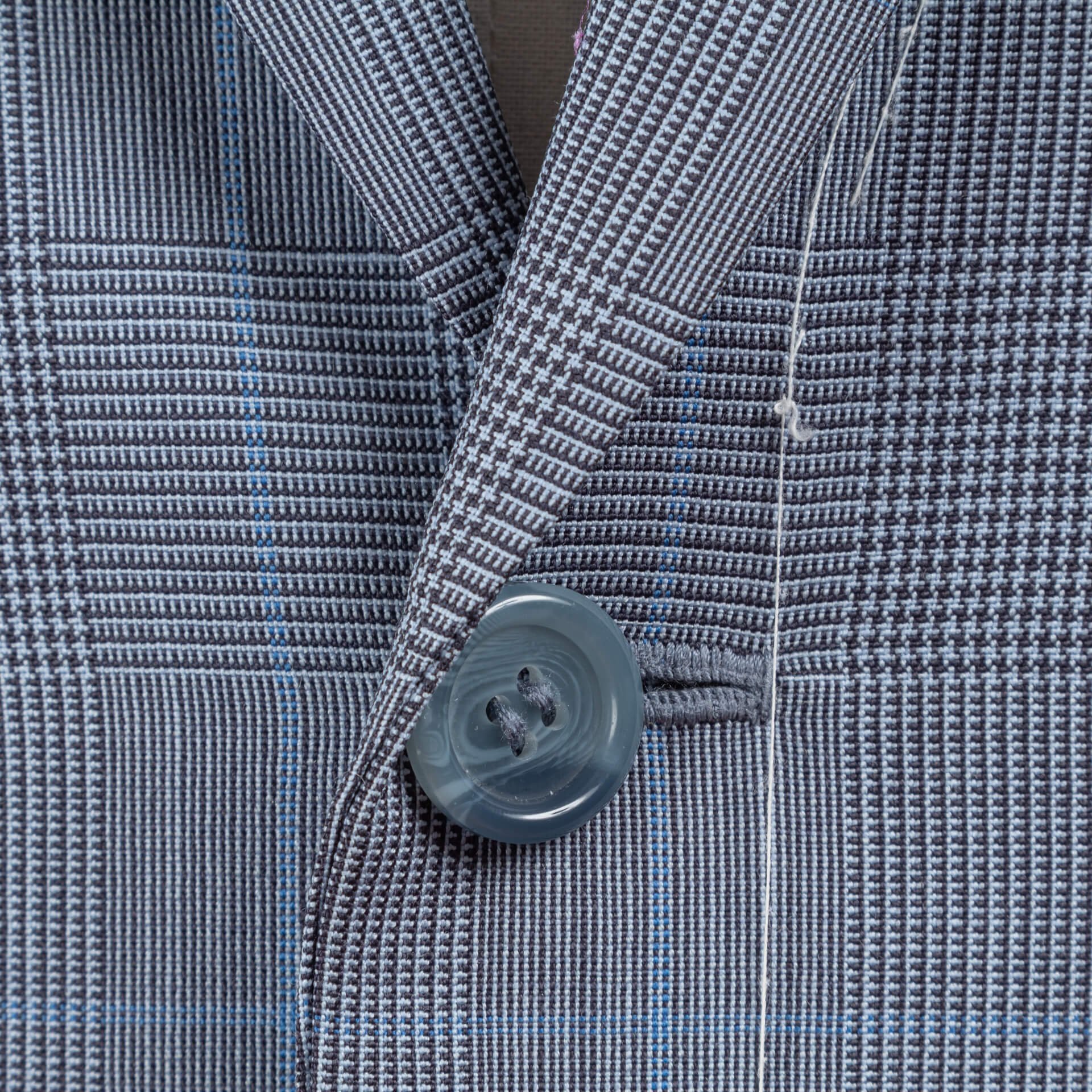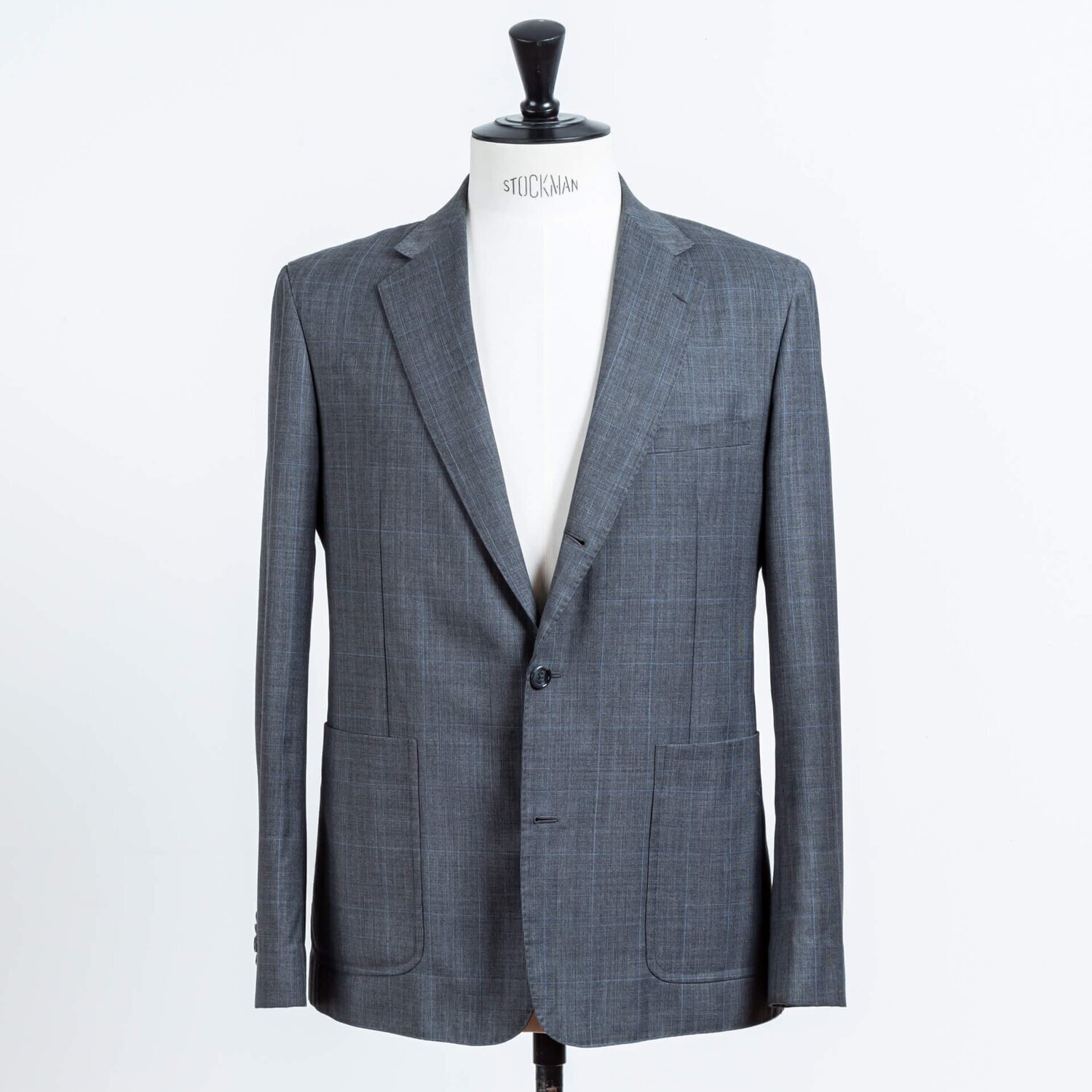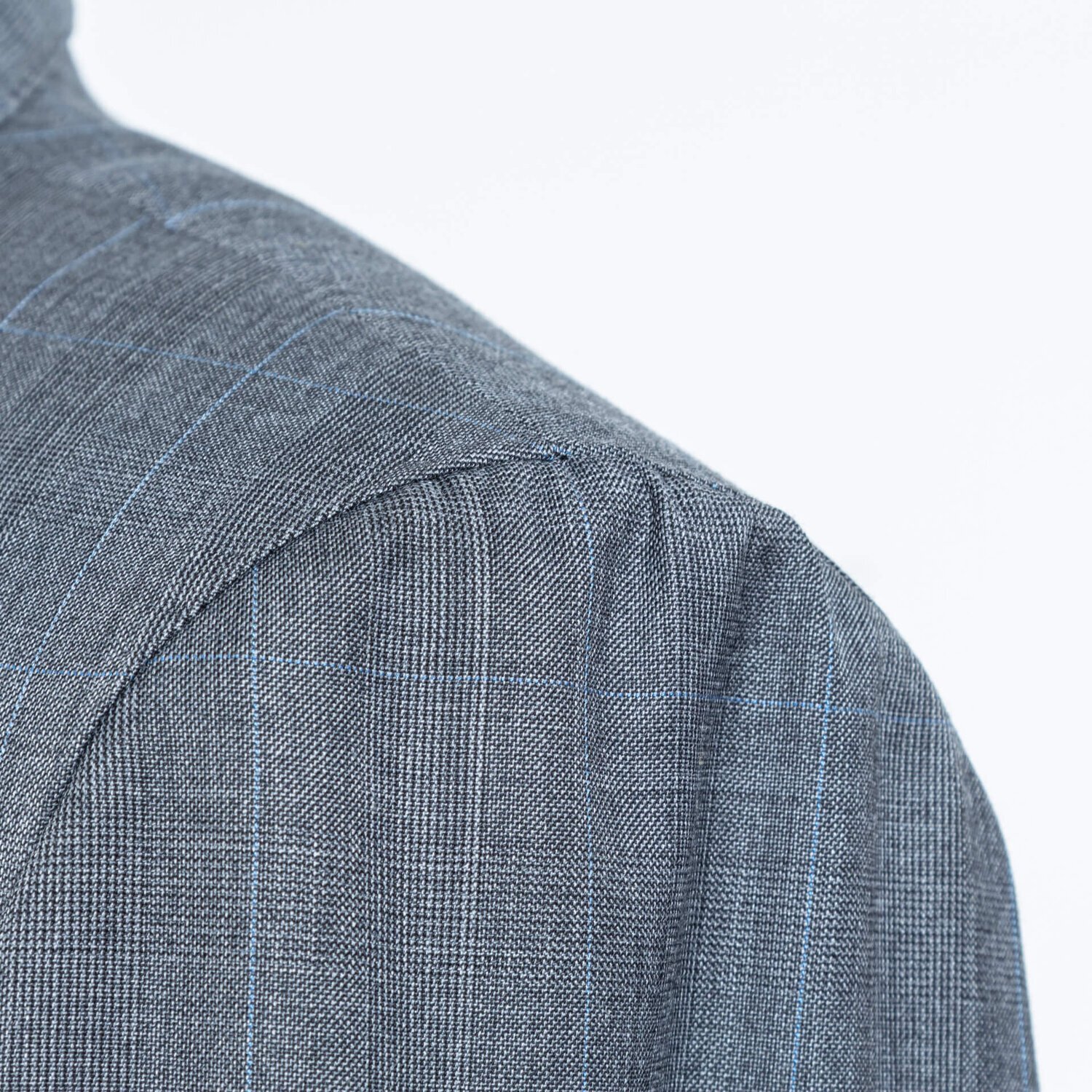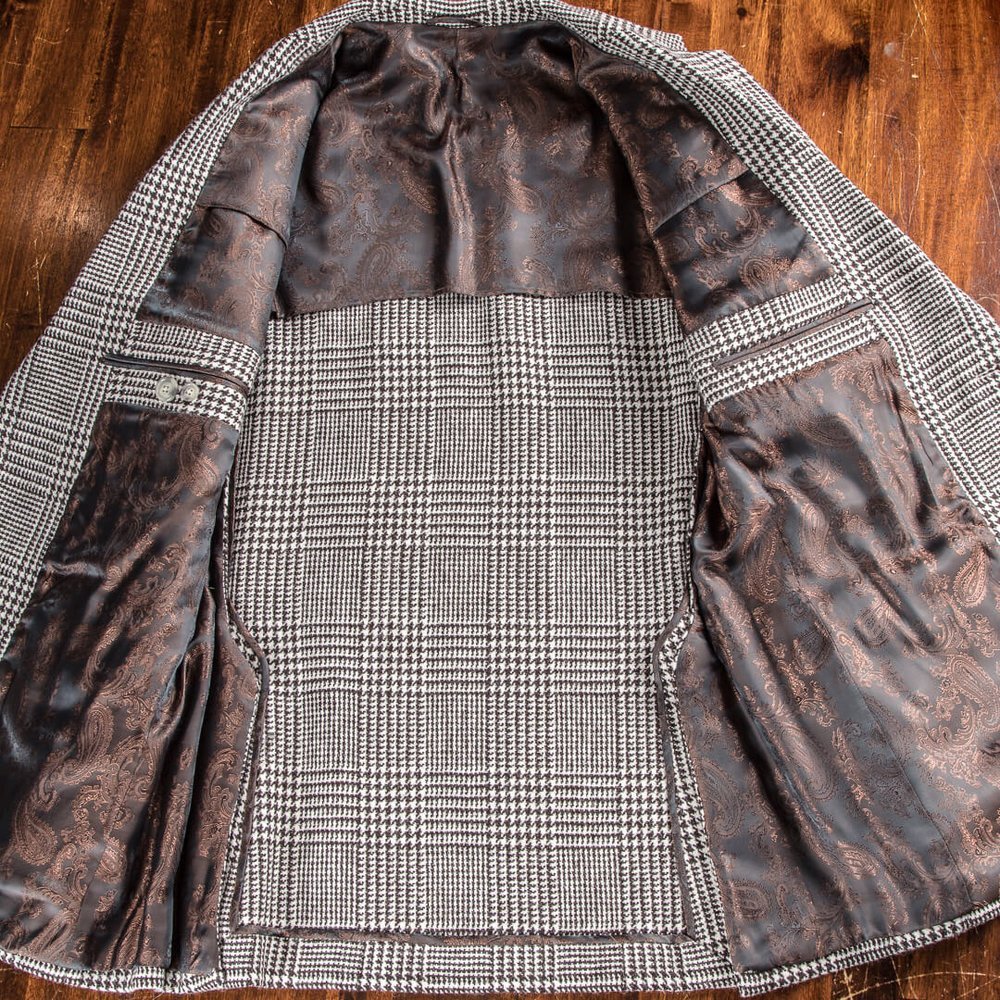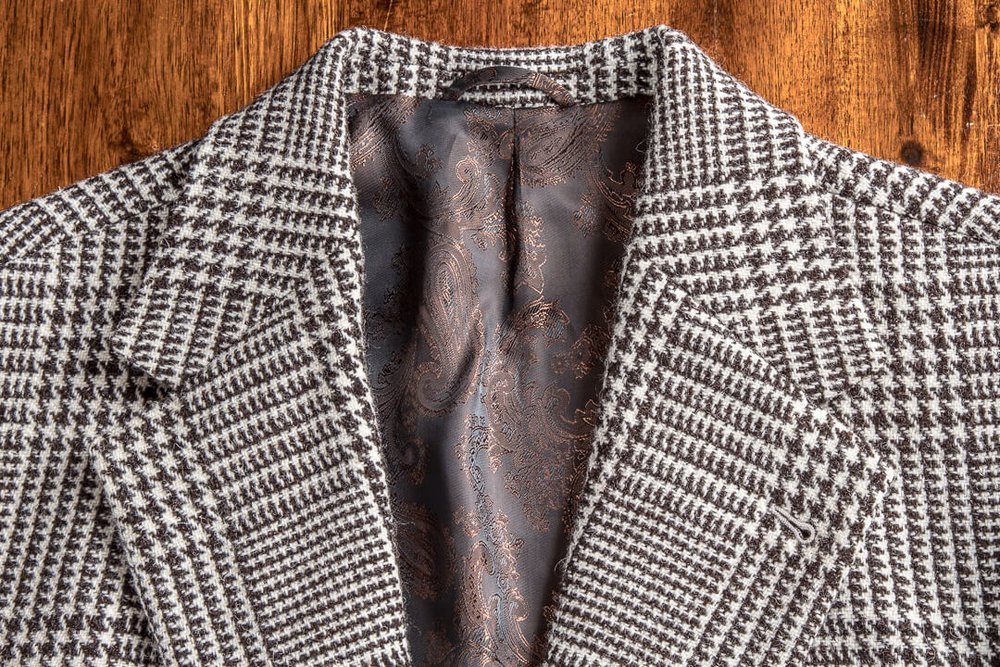The Glen Plaid Suit
The Glen Plaid: more than just a check or pattern
While the Victorian era entertained tartans and the turn of the century hosted checks, it wasn’t until the 1920s that plaid clothing revolutionized the rules of urban style, following the English trend in which “country” began to impinge upon “town” in matters of male dress. Although some checks like the houndstooth enjoyed a distinguished career, none would become as enduringly stylish as the Glen Plaid.
A 3 piece suit made from a Glenurquhart plaid with blue overcheck, 420grm superfine Merino wool; consisting of a 2 button notched lapel jacket, a 5 button waistcoat with breast pockets, and a pair of trousers fitted with button closing.
What is Glen Plaid
This classic plaid has a couple different names that you might know it by: Glen plaid, Glen check, Glen Urquhart plaid (Glenurquhart), Prince of Wales check, etcetera. It’s a woollen fabric with a woven twill design consisting of small and large checks. It is usually made of black/grey and white (or with more muted colours like faint taupes), often overlaid with a windowpane accent colour (commonly sky blue, but also seen in lavender, red, etc). It’s a very subtle and muted pattern, making it a favourite among conservative businessmen.
Click here to view more this Prince of Wales with Red Overcheck suit .
History of The Glen Plaid Suit
The name is taken from the valley of Glenurquhart in Inverness-shire, Scotland, where the checked wool was first used in the 19th century by the New Zealand-born Countess of Seafield to outfit her gamekeepers (hence the slightly more sporty feel).
Click here or to view more of this Prince of Wales with Blue Overcheck jacket.
What’s the difference between Glen Plaid and the Prince of Wales check?
Glen Plaid is also sometimes nicknamed the “Prince of Wales check”, as it was popularized by legendary style icon Duke of Windsor, while he was the Prince of Wales, of course. Still what is referred to as 'the Prince of Wales check', is when there is a blue overcheck on the black and white Glen Plaid pattern.
Click here to view more of this unlined Prince of Wales with Blue Overcheck jacket.
Today the Glen Plaid pattern is just as popular as ever, and it’s being used to make many different types of garments in menswear.
Jack Nicholson as Jake 'J.J.' Gittes in the 1974 movie Chinatown, wearing a Glen Plaid suit with peak lapels.
The Technique and Effect of a Glen Plaid Suit
For the sartorial romantic, the Glen Plaid suit conjured up images of strolling in the fresh and radiant light of a spring morning. Its charm stemmed from the overall lightness achieved through a refined play of vertical and horizontal lines that intersect at regular intervals over a houndstooth check. Sometimes thin threads of bright colour (red, blue, rust, pink) were woven through the checks.
View more of the Puppytooth waistcoat, unlined Glenurquhart jacket and Prince of Wales with Red Overcheck suit.
The waistcoat is technically referred to as a Puppytooth (Pied-de-Poule), since the checks are smaller than the checks from a Houndstooth (Pied-de-Coq). Both variations are used in the Glenurquhart check, and also a third even smaller one, as depicted in the images above.
Humphrey Bogart in a double-breasted Glen Plaid suit.
Although the Glen Plaid could flatter almost any physique, for tailors, plaids pose numerous challenges and additional costs. The horizontal and vertical lines have to match up exactly, requiring slightly more fabric than the solid or striped two piece. However, the plaid’s higher cost and complexity of production invested it with just the right allure to secure its position in masculine fashion mythology.

